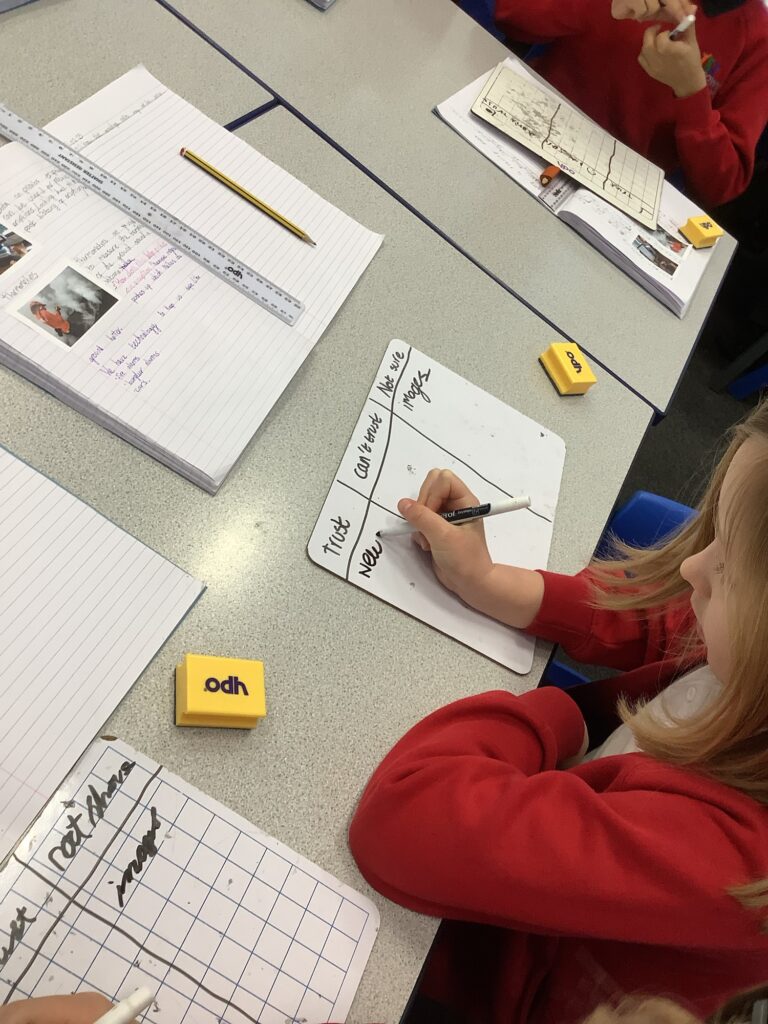Today was Safer Internet Day! This was a day designated to all things online safety.
In Year 4, we focused on some key elements of online safety:
- Fake news
- Phishing
- Sharing personal information
- Scams
We began by discussing fake news and how we can spot it. Not everything we read online is true and we must make sure we don’t trust everything we read. Questions we can ask when deciding if an information source is trustworthy:
- Who has written it?
- Do they have a good reputation?
- Why has it been written?
- Is it opinion or fact?
- Is it high quality?

We then explored some different sources of information all about Roblox and had to rank them from most trustworthy to least trustworthy – using our questions to help us.

It’s really important to always speak to a trusted adult if you’re unsure about something you read online.
We joined a great BBC live lesson for Safer Internet Day all about scamming and phishing.
Phishing involves tricking someone into giving out personal information online by pretending to be someone else.
We learnt how to spot a phishing scam using a helpful acronym.

Whenever we suspect a phishing scam, we should always tell a trusted adult and then block and report the scammer.
Finally, we discussed how to create a safe password. Our recipe for a strong and secure password:
Ingredients:
- 3 random words
- at least 1 number
- at least 1 symbol
- some capital letters
Method:
- Combine ingredients and mix up the order.
Help at home: ask your children how they can spot a scam online and what they should do if they find one.